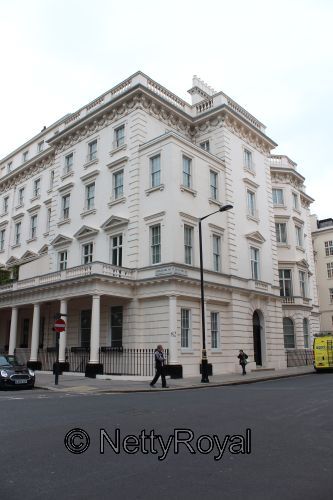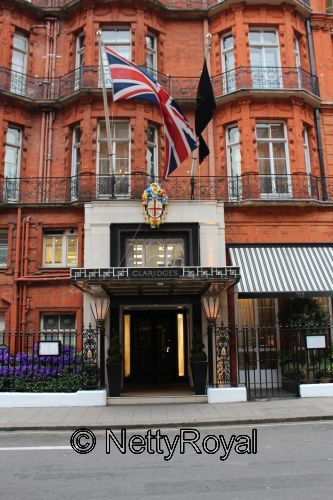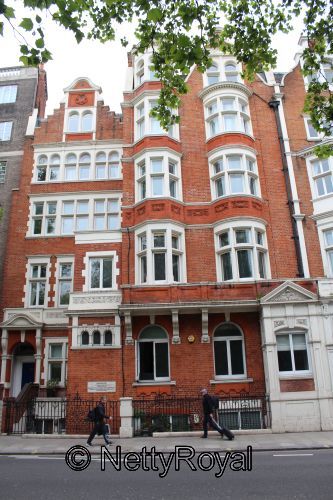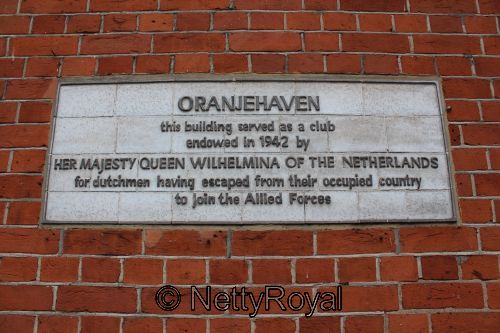Some weeks before leaving for my five-day vacation to London I discovered an interesting royal walk through London on the Internet: In the Footsteps of Queen Wilhelmina (in Dutch). A walk of about six kilometers from Sloane Square tube station to Marble Arch. On my fourth day I had some time left and gave it a try. A bit much maybe if you have already been walking for most of the day, but I made it. I might go and look on the website Wandelingen.info again next time I go somewhere, as it was rather interesting to discover a city this way. The website lists all kinds of walks in several European countries. There is actually even a travel guide from Capitool called “In het Voetspoor van de Oranjes” (In the footsteps of the Oranges) by Tineke Zwijgers, which costs 25 Euro. This guide even mentions more walks and travels connected to the royal families of the Netherlands and Luxembourg.
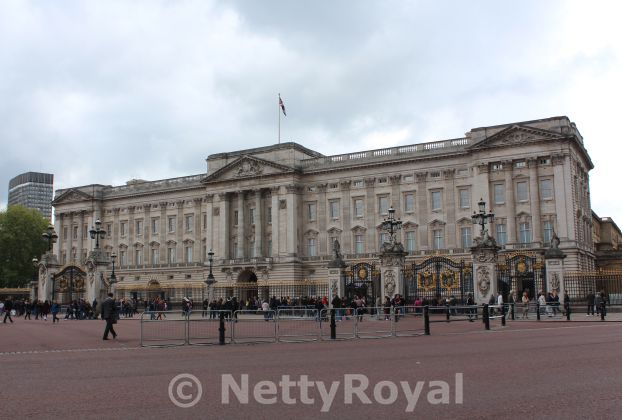
I simply started with only the description from the blog above in my hands and a camera. No map, but of course I know London a bit, so I didn’t think I could get lost that easily. I must say the description was quite clear, except for once when it said I had to go to the right and I clearly had to go to the left. When the German troops arrived in the Netherlands on 10 May 1940, the Queen and her family at first remained in the country, hiding in the bombshelter of the Noordeinde Palace in The Hague. On 12 May Princess Juliana, Prince Bernhard and their daughters Princess Beatrix and Princess Irene already left. On 13 May also Queen Wilhelmina was forced to leave. It had become too dangerous. By boat she reached Harwich – accidentally like Wilhelmina I also travelled by boat from Hoek van Holland to Harwich this time – and from there travelled to Buckingham Palace. There she and her family were the guests of the British royal family. It was in the chapel of this palace that Princess Irene was christened on 31 May. Afterwards Princess Juliana and her children left for Canada, where they would stay until the end of the war five years later. I passed the palace halfway the walk I think …
Soon Wilhelmina also searched for a house, where she would live with her son-in-law Prince Bernhard. Their first address was 82 Eaton Square in Belgravia, London. From the balcony of her living room she had a good view on Eaton Square with its trees. She wouldn’t live there very long, and soon found herself a house in Roehampton, outside London. Especially during the Blitzkrieg in the Summer 1940 she prefered Eaton Square above Roehampton. In October 1940 Prince Bernhard found them Stubbings House near Maidenhead. The London office moved to nearby 77 Chester Square, where a small memorial plaque on the wall still commemorates the past of the house. Wilhelmina moved from Stubbings House to The Grange near South Mimms, which was however too close to some airports and became too dangerous. She in early 1944 moved back to Stubbings House and to Laneswood in Mortimer near Reading at Easter 1944, where she stayed until May 1945.
Passing the Goring Hotel – you know where Kate Middleton spent her last night as an unmarried girl before becoming the Duchess of Cambridge – and Buckingham Palace I arrived at Piccadilly Street. To be honest, I couldn’t find Stratton House on 5 Stratton Street at first. Too modern and a I was looking for a 5 on the wall, not a five on an outside sign. But in the end I made it. Stupid as even the name was mentioned above the entrance. Here the Dutch goverment in exile had its seat. Also here the broadcasts of “Radio Oranje” (Radio Orange) took place. 34 Times Queen Wilhelmina held a speech to encourage her people. Nearing the end of my walk I passed the Claridge’s Hotel in Davies Street. This is where Wilhelmina and Bernhard spent the night in the bombshelter on 13 September 1940, much to her own excitement. She wrote her daughter afterwards that she had enjoyed her stay there a lot and had listened to the war sounds for a whole hour.
The walk finally ended at 23 Hyde Park Place, Bayswater Road. An apartment was the home of the “Oranjehaven” as is still readable on the wall. The “Engelandvaarders” (Dutch people who during World War II escaped to England to join the Allied forces) stayed here. Queen Wilhelmina sometimes came here to drink tea.
Some literature in Dutch about Queen Wilhelmina in London during World War II:
- Brave-Maks, M.H., De Koningin in Londen (The Queen in London, the writer was her secretary during these years).
- Brendel, Carel, De Oranjes in de Tweede Wereldoorlog (The Oranges in the Second World War).
- Netherlands, Queen Wilhelmina of the, Eenzaam maar niet alleen (Lonely but Not Alone).
- Schaap, Jord, Het Recht om te Waarschuwen (The Right to Warn; about Radio Oranje with Wilhelminas speeches).

